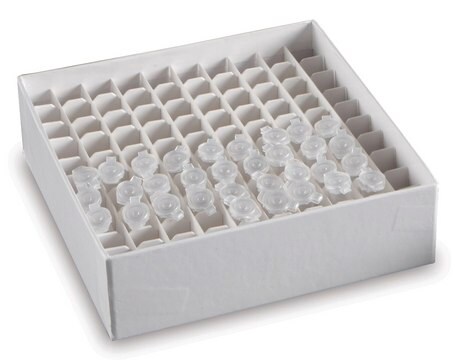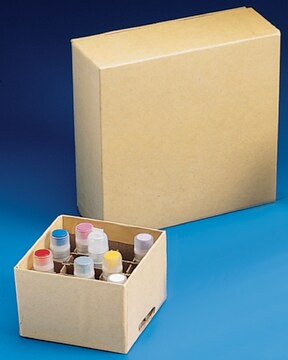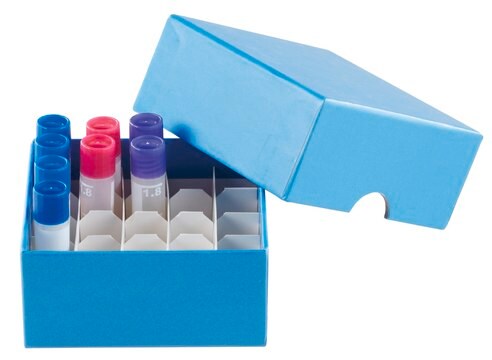MABS1284
Anti-Apolipoprotein(a) Antibody, clone LPA4
clone LPA4, from mouse
Sinonimo/i:
Apolipoprotein(a), Apo(a), Lp(a)
About This Item
Prodotti consigliati
Origine biologica
mouse
Forma dell’anticorpo
purified immunoglobulin
Tipo di anticorpo
primary antibodies
Clone
LPA4, monoclonal
Reattività contro le specie
human, primate
tecniche
ELISA: suitable
immunohistochemistry: suitable (paraffin)
immunoprecipitation (IP): suitable
western blot: suitable
Isotipo
IgG1κ
N° accesso UniProt
Condizioni di spedizione
ambient
modifica post-traduzionali bersaglio
unmodified
Informazioni sul gene
human ... APOA1(335)
Descrizione generale
Specificità
Immunogeno
Applicazioni
Immunohistochemistry Analysis: A 1:25 dilution from a representative lot (pre-conjugated with biotin) detected Apo(a) in paraffin-embedded human carotid artery tissue sections (Courtesy of Dr. Sotirios Tsimikas, M.D., University of California at San Diego, USA).
ELISA Analysis: A representative lot was employed as either the capture or detection antibody for the detection of Lp(a) levels in human, chimpanzee, bonobo, gorilla, baboon, and cynomolgus monkey plasma samples, as well as the interaction of OxPL and ApoB with various human Apo(a) transgenes in Tg mice blood samples and purified recombinant human Apo(a) constructs (Leibundgut, G., et al. (2013). J. Lipid Res. 54(10):2815-2830).
ELISA Analysis: A representative lot was employed either as the capture antibody for the detection of Apo(a) and Apo(a)-associated OxPL or as the detection antibody (biotinylated) for the detection of Lp(a) (ApoB-linked Apo(a)) captured by an ApoB antibody in a atherosclerosis study involving uremic mice that express human Apo(a) and ApoB transgene (Pedersen, T.X., et al. (2010). J. Lipid Res. 51(10):2967-2975).
Immunoprecipitation Analysis: A representative lot immunodepleted Apo(a) and associated OxLDL-E06 from patients plasma samples collected immediately before or 6 hrs after percutaneous coronary intervention (PCI), while only ~50% of OxLDL-E06 was found associated and co-precipitated with Apo(a) in the immediate post-PCI time point (Tsimikas, S., et al. (2004). Circulation. 109(25):3164-3170).
Western Blotting Analysis: A representative lot detected recombinant human wild-type Apo(a) and a 8K-IV lysine-binding defective (LBS-deficient) Apo(a) mutant expressed in and purified from transfected HEK293 cells (Leibundgut, G., et al. (2013). J. Lipid Res. 54(10):2815-2830).
Signaling
Qualità
Isotyping Analysis: The identity of this monoclonal antibody is confirmed by isotyping test to be mouse IgG1 .
Descrizione del bersaglio
Stato fisico
Stoccaggio e stabilità
Altre note
Esclusione di responsabilità
Non trovi il prodotto giusto?
Prova il nostro Motore di ricerca dei prodotti.
Codice della classe di stoccaggio
12 - Non Combustible Liquids
Classe di pericolosità dell'acqua (WGK)
WGK 1
Punto d’infiammabilità (°F)
Not applicable
Punto d’infiammabilità (°C)
Not applicable
Certificati d'analisi (COA)
Cerca il Certificati d'analisi (COA) digitando il numero di lotto/batch corrispondente. I numeri di lotto o di batch sono stampati sull'etichetta dei prodotti dopo la parola ‘Lotto’ o ‘Batch’.
Possiedi già questo prodotto?
I documenti relativi ai prodotti acquistati recentemente sono disponibili nell’Archivio dei documenti.
Il team dei nostri ricercatori vanta grande esperienza in tutte le aree della ricerca quali Life Science, scienza dei materiali, sintesi chimica, cromatografia, discipline analitiche, ecc..
Contatta l'Assistenza Tecnica.







